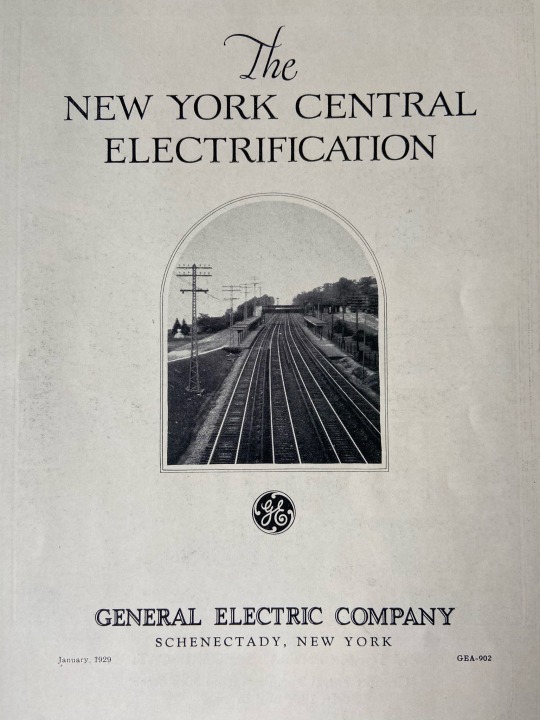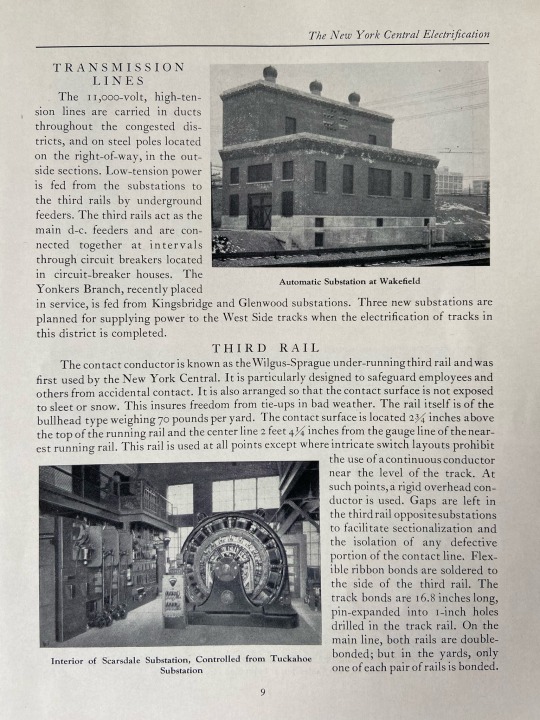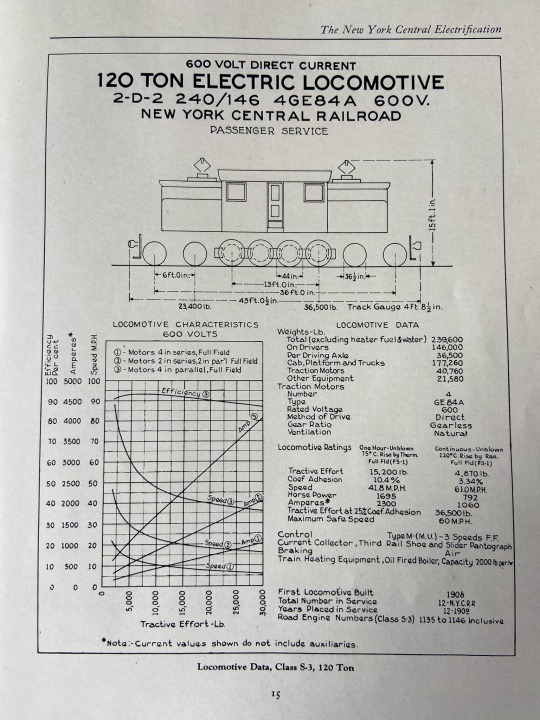#electricity infrastructure
Explore tagged Tumblr posts
Text

#deutschland#norddeutschland#schleswig holstein#sylt#energiewende#windkraft#stromverbrauch#power grid#energy transition#electricity#electricity infrastructure#energia#wind mill#photographers on tumblr#iphone#iphone 12
23 notes
·
View notes
Note
ik ur the sollux and karkat blog but would you ever draws a nepeta ? if not thats perfectly fine :)) (also!!! ur probably in my top ten favorite artists ever. you just . do em so good!!!!!)
🫴 a nepeta

#👋 thanks mate i recognize u in my notes i rlly appreciate it :}#ask#cautionszz#homestuck#nepeta leijon#2024#vioart#babbling no no nep listen its the fault of the system.. the infrastructure.... the society......#overreliance of network and electricity for everyday life..... expensive fees for adult playgrounds..... loss of third places etcetc.......
2K notes
·
View notes
Text
African poverty is partly a consequence of energy poverty. In every other continent the vast majority of people have access to electricity. In Africa 600m people, 43% of the total, cannot readily light their homes or charge their phones. And those who nominally have grid electricity find it as reliable as a Scottish summer. More than three-quarters of African firms experience outages; two-fifths say electricity is the main constraint on their business.
If other sub-Saharan African countries had enjoyed power as reliable as South Africa’s from 1995 to 2007, then the continent’s rate of real GDP growth per person would have been two percentage points higher, more than doubling the actual rate, according to one academic paper. Since then South Africa has also had erratic electricity. So-called “load-shedding” is probably the main reason why the economy has shrunk in four of the past eight quarters.
Solar power is increasingly seen as the solution. Last year Africa installed a record amount of photovoltaic (PV) capacity (though this still made up just 1% of the total added worldwide), notes the African Solar Industry Association (AFSIA), a trade group. Globally most solar PV is built by utilities, but in Africa 65% of new capacity over the past two years has come from large firms contracting directly with developers. These deals are part of a decentralised revolution that could be of huge benefit to African economies.
Ground zero for the revolution is South Africa. Last year saw a record number of blackouts imposed by Eskom, the state-run utility, whose dysfunctional coal-fired power stations regularly break down or operate at far below capacity. Fortunately, as load-shedding was peaking, the costs of solar systems were plummeting.
Between 2019 and 2023 the cost of panels fell by 15%, having already declined by almost 90% in the 2010s. Meanwhile battery storage systems now cost about half as much as five years ago. Industrial users pay 20-40% less per unit when buying electricity from private project developers than on the cheapest Eskom tariff.
In the past two calendar years the amount of solar capacity in South Africa rose from 2.8GW to 7.8GW, notes AFSIA, excluding that installed on the roofs of suburban homes. All together South Africa’s solar capacity could now be almost a fifth of that of Eskom’s coal-fired power stations (albeit those still have a higher “capacity factor”, or ability to produce electricity around the clock). The growth of solar is a key reason why there has been less load-shedding in 2024...
Over the past decade the number of startups providing “distributed renewable energy” (DRE) has grown at a clip. Industry estimates suggest that more than 400m Africans get electricity from solar home systems and that more than ten times as many “mini-grids”, most of which use solar, were built in 2016-20 than in the preceding five years. In Kenya DRE firms employ more than six times as many people as the largest utility. In Nigeria they have created almost as many jobs as the oil and gas industry.
“The future is an extremely distributed system to an extent that people haven’t fully grasped,” argues Matthew Tilleard of CrossBoundary Group, a firm whose customers range from large businesses to hitherto unconnected consumers. “It’s going to happen here in Africa first and most consequentially.”
Ignite, which operates in nine African countries, has products that include a basic panel that powers three light bulbs and a phone charger, as well as solar-powered irrigation pumps, stoves and internet routers, and industrial systems. Customers use mobile money to “unlock” a pay-as-you-go meter.
Yariv Cohen, Ignite’s CEO, reckons that the typical $3 per month spent by consumers is less than what they previously paid for kerosene and at phone-charging kiosks. He describes how farmers are more productive because they do not have to get home before dark and children are getting better test scores because they study under bulbs. One family in Rwanda used to keep their two cows in their house because they feared rustlers might come in the dark; now the cattle snooze al fresco under an outside lamp and the family gets more sleep.
...That is one eye-catching aspect of Africa’s solar revolution. But most of the continent is undergoing a more subtle—and significant—experiment in decentralised, commercially driven solar power. It is a trend that could both transform African economies and offer lessons to the rest of the world."
-via The Economist, June 18, 2024. Paragraph breaks added.
#one of the biggest stories of this century is going to be the story of the African Renaissance#I promise you#well preferably they'll come up with a non-European term for it lol#but trust me it WILL happen and it will be SO good to see#africa#south africa#nigeria#kenya#solar#solar power#solar panels#solar pv#energy#clean energy#poverty#electrification#distributed energy#electricity#infrastructure#hope#solarpunk#good news#solar age#<- making that a tag now
411 notes
·
View notes
Text
i don't think the background art in mob psycho 100's anime adaptation gets nearly enough love. it's full of mundane objects depicted in the most exquisite watercolors.

like this electrical pole here. with its giant soup can-like transformer and attendant power lines against a cloudy twilight sky, all shot through with vibrant pink and lilac and creamy butter yellow.
not only does this painting–and it is a painting–bring new meaning to the phrase 'golden hour', it's still one of the most glorious things i've ever laid eyes on. and you might pass one of these utility poles every day without a second glance. since seeing this image? i haven't been able to.
this is a single frame of animation. there are hundreds of thousands more in this series, maybe just as beautiful. i wanted to call your attention to this one. just because.
it reminds me to pay attention.
to notice, and keep noticing, the beauty in ordinary things (and beings!).
#mob psycho 100#mp100#mp100 meta#mp100 anime#art#watercolor#2D animation#background art#official art#thank you studio bones#image description in alt#image described#power lines#a screenshot of an electrical pole and its connected power lines against a vibrantly pink cloudy twilight sky#it's not just mob psycho#while infrastructure shots are ubiquitous in anime#they're not always this grand#i believe they are a call to viewers#to appreciate all the little things we don't think about#that make our lives work#but that's another post#分析
341 notes
·
View notes
Text

105 notes
·
View notes
Text

79 notes
·
View notes
Text

juvenile pylon spotted at the pylon zoo
37 notes
·
View notes
Text

Scotland Power
21 notes
·
View notes
Text

You know we’re in a healthy, functioning society when people have to use a burger app to see if they have electricity because the local infrastructure doesn’t exist
#society#community#infrastructure#reality#earth#ausgov#politas#auspol#tasgov#taspol#australia#fuck neoliberals#neoliberal capitalism#anthony albanese#albanese government#eat the rich#eat the fucking rich#electricity#class war#utilities#utility#anti capitalism#anti colonialism#anti cop#anti colonization#dating apps#app store#mobile apps#contributor apps#apps
24 notes
·
View notes
Text

Information-dense booklet about our electrification projects made in 1929. By then we had already electrified most of our trackage around New York City with the exception of the now-defunct Putnam Line. Check out the inside, with photographs of our infrastructure and some diagrams of our state-of-the-art electric locomotives, the S and T motors.





#new york central#railroad#trains#history#1920s#nyc#locomotive#electric locomotive#t motor#s motor#electrical infrastructure#general electric
15 notes
·
View notes
Text
Damn. A tornado hit my area and I still don't have power.
I'm good tho! But outside is a whole mess
#if i dont respond thats why. i still dont have power in my area#like ive got internet but no electricity#on another note i just read my neighborhoods gossip website and#someone got killed around here jfc#a light pole fell down the road and the guy went outta their car to move it outta the way and got electrocuted#im not sure who it was yet. no name yet. but there was an ambulance#also there is currently a lot of tree debris outside. it hit my truck but i havent checked the damages yet#that was scary as fuck though. its been hours. its 4am rn and im still shaken up. we just dont get tornadoes around here#this was an actual outlier. we dont have tornadoe infrastructure. damn we dont even have basements#thanks bugs. engel. and coffee for being there as i mildly panicked#this bird speaks
21 notes
·
View notes
Text
Electric Cars Suck

There is some irony in how things turned out, right? Like eight years ago or so it was mostly the left who was like: "We need more electro mobility!" And the people on the right were like: "Noooo! We need our gas guzzlers that go VROOOOOM!" And somehow now the people on the right buy their stupid cybertrucks, while the people on the left have in large numbers converted to: "Actually, all cars fucking suck."
And hey, that's me. I am in that story. Because actually, all cars fucking suck!
But let's be a bit more serious: The main issue with cars is not even the CO2, the fine particles, or the microplastics they generate. (Yes, most microplastics in the environment originate with cars!) The main issue is, that we live in a car-centric society, that is so very much inaccessible for anyone who does not have a car.
And let's be honest here: In this regard I am complaining as someone with a lot of things going for me: I live in Germany and I live in a city here. We have actually somewhat working public transport, and even my physically disabled ass is capable of reaching the next super market, pharmacy, doctor's office and library within 5 minutes on foot. Sure, due to a lack of bus drivers (which again is due to a lack of proper payment for said bus drivers) they cut some of the bus lines here, making the time I need to get to the next hospital go up by a good chunk, but... What I am saying is: Hey, I am at least not living in the USA, where it is basically impossible to get around in a lot of places when you have no car, because the infrastructure is just so bloody car-centric.
And that is the reason why cars just suck so darn much. Because they need all that infrastructure that makes it harder for everyone to get around.
And the double issue with that is, that some people will still need cars no matter what, even if we try to improve that. I spoke about it before: Some disabled people will always need cars to get around, because they just do not have an alternative due to a variety of reasons. And some services (like ambulances, fire fighters and so on) will also just need cars. Which taken together means that we need to maintain some infrastructure.
Generally speaking I feel, a lot of folks within the Solarpunk scene do underestimate this issue, too. Especially in concern to the USA, Canada and some other colonizer cities in the global south, that have been created very much with cars in mind.
In Europe, most cities have been created with horse drawn carriages in mind and people who walk on foot. Sure, they have been retrofitted to allow for cars, but that retrofitting can easily be toned down in a way that would allow those cars that are needed to pass through, but allow the areas to be used otherwise. (I mean, we have several cities here were you can still see that the city originally has been build by Romans some 2000 years ago, because the city map features certain Roman city planning styles.) It is not really so hard to turn those cities into 15-minute-cities again.
But in the US? In the US a lot of the cities have always been constructed with the car in mind, and the entire street plan is organized around the car. Lots of wide streets. Lots of parking lots. Lots of other facilities that are needed for cars. Sure, you can reuse some of the space. But that does not negate the fact that everything has this wide sprawl that makes it a lot harder to get around. And that really is a problem if someone tried to make 15-minute-cities here. Because frankly... In some areas there just would not be another way but to just tear it all down to rethink city planning once more.
Like, sure, in the city cores it is not that much of an issue. Turning Manhatten into a 15-minute-city is not the issue. But the wider area of New York city? Eh... And in other cities it is worse, of course.
And yeah, those issues - the stupid infrastructure cars need... It is still the same, no matter whether the car goes VROOOOOOM or BZZZT.
#solarpunk#lunarpunk#car centric infrastructure#anti cars#electric cars#electric vehicles#15 minute city#pedastrian cities#europe#usa#city planning
16 notes
·
View notes
Note
Do you have a source for the Brazilian courts demanding personal information of the posters? I haven't been following the story very closely, but everything I've seen has only talked about censorship, which Mush already did for Turkey last year.
I haven't been following it closely either- I'm just going off this post, by someone I don't know and whose objectivity I distrust. They claim that the new Brazilian government had a Jan 6-style failed coup attempt by their far right, and that their Supreme Court ruled that the social media platforms the participants used to coordinate the attempt were required to hand over all their information about the attackers so they could be prosecuted. Purportedly, Musk said no, this obviously violated the laws that said he had to do it, and there is now a legal snafu of some sort.
I don't expect OP to have been lying about most of this, because they're arguing that the demands were justified- but I also can't find a source on that specifically, yeah. The news stories I'm seeing only mention that they demanded that some number of users' accounts should be suspended due to "spreading misinformation". I'm not sure if the link between the riots (which happened) is as direct as OP is implying, but it seems plausible.
Regardless, communications platforms should not be legally liable for speech hosted on them, and even though the rioters in question probably should be arrested, demanding that Twitter be involved in this process and taking retaliatory action against them for noncompliance is- and I believe this is the technical term- "some real bullshit".
If web platforms can be held responsible for anything any government decides is "misinformation", then you have a serious problem the next time you get a Bolsonaro. You don't want Twitter to cave to these sorts of orders. This was the correct move.
...And, as you note, the move Musk did not make when Erdogan demanded the same thing in 2023. One would hope that this is him regretting that decision and opting to do better this time, but more realistically he's just less principled than he likes to think and makes these decisions mainly on the basis of culture war grudges and how personally pissed off he happens to be today.
#politics cw#i used to kind of respect the guy and get annoyed on his behalf about the hate#when his thing was popularizing electric cars and trying to revolutionize transportation infrastructure#then he decided the best use of 44 billion dollars was to become King of Twitter#and went on SNL with the most criminally unfunny Wario sketch i've ever seen in my life#and i realized oh this guy SUCKS sucks#unfortunately it is fashionable to make fun of him even when he makes the right decision#thereby confusing people into thinking the right decision was the wrong decision
11 notes
·
View notes
Text
"An ambitious plan to provide electricity to 300 million Africans by 2030, supported by an initial $30 billion commitment from the World Bank and the African Development Bank, is now underway, with assessments of the first potential beneficiaries already in progress, Bloomberg reported. According to the International Energy Agency (IEA), more than 600 million Africans remain without access to electricity, leaving the continent with the lowest energy access rate in the world, hovering at just over 43%.
Africa accounts for nearly three-quarters of the world's population without access to electricity, with countries like South Sudan, Burundi, and Chad having electrification rates below 12%. This severe lack of power stifles productivity and constrains economic growth in some of the poorest countries globally.
“We’ve seen, frankly, stagnation” in getting electricity to more Africans over the last 15 years, Ashvin Dayal, who heads the Rockefeller Foundation’s power and climate program, told Bloomberg. “This is for us the defining climate and development challenge for the continent over the next 20 years.”
This funding will support 15 projects across 11 African countries, including Burkina Faso and Mozambique, with a focus on delivering clean energy solutions through technologies like mini-grids, according to a statement from the groups."
-via Business Insider Africa, September 20, 2024
207 notes
·
View notes
Text
Ilana Berger at MMFA:
The Biden administration is cutting car pollution and incentivizing automakers to produce electric vehicles. Right-wing media repeatedly misconstrued these efforts, falsely claiming they were attempting to take away voters’ gas-powered cars or forcing them to buy electric vehicles. No such federal mandate exists. Yet now the Trump-Vance campaign has adopted this false claim.
Harris has supported efforts to expand access to electric vehicles during her time as vice president, but that did not include a federal mandate
The EPA finalized a tailpipe emissions rule in March, but it was not a mandate. In March, the EPA established tailpipe emissions standards for the auto industry in a bid to slash greenhouse gas emissions. According to NPR, “The EPA rules are not written as an EV mandate or a ban on the sale of gas cars. … Instead, the EPA sets standards that apply across an entire fleet – meaning an automaker still can make vehicles with higher emissions, as long as they also make enough very low or zero-emission vehicles that it averages out.” [NPR, 3/20/24]
E&E News clarified that “there is no EV ‘mandate’ from the administration, although President Joe Biden and Vice President Harris have backed a series of climate policies that seek to incentivize the production and purchasing of EVs.” [ E&E News, 9/3/24]
The New York Times also wrote of the EPA rule that it “does not mandate sales of electric vehicles, and consumers can still buy and drive gas-powered cars.” [The New York Times, 3/20/24]
The Inflation Reduction Act allocated billions toward supporting the adoption of EVs through tax credits, loans, and funding for charging networks, critical minerals, and battery manufacturing. Harris cast the tie-breaking vote that passed the Inflation Reduction Act, which created $47 billion in EV investment on top of tax credits and loans. [Atlas EV Hub, 9/2/22; accessed 9/6/22; Twitter/X, 8/7/24]
Harris also oversaw parts of the Infrastructure Investment and Jobs Act that distributed funding to school districts for electric buses and to states for EV charging stations.The act, also known as the Bipartisan Infrastructure Law, provided $7.5 billion to build a network of charging stations, and $900 million of that went to the electric school bus initiative. [AP News, 12/13/21; Spectrum News, 5/29/24]
Donald Trump’s campaign has echoed right-wing media lies about electric vehicles, such as falsely insinuating that Kamala Harris and the Democrats want to eliminate gas-powered cars and that they have issued an EV mandate (when no such thing exists).
#Donald Trump#J.D. Vance#Kamala Harris#Electric Vehicles#Vehicles#Transportation#Infrastructure Investment and Jobs Act#Inflation Reduction Act#Tammy Bruce#Rick Perry#Tom Del Beccaro#Sean Hannity#Jeanine Pirro#Steve Hilton
8 notes
·
View notes
Text

Electricity, Phnom Penh, 2011
#cambodia#phnom penh#asia#southeast asia#infrastructure#electricity#photographers on tumblr#original photography#mekong.net#bruce sharp#2011#canon powershot a480
15 notes
·
View notes